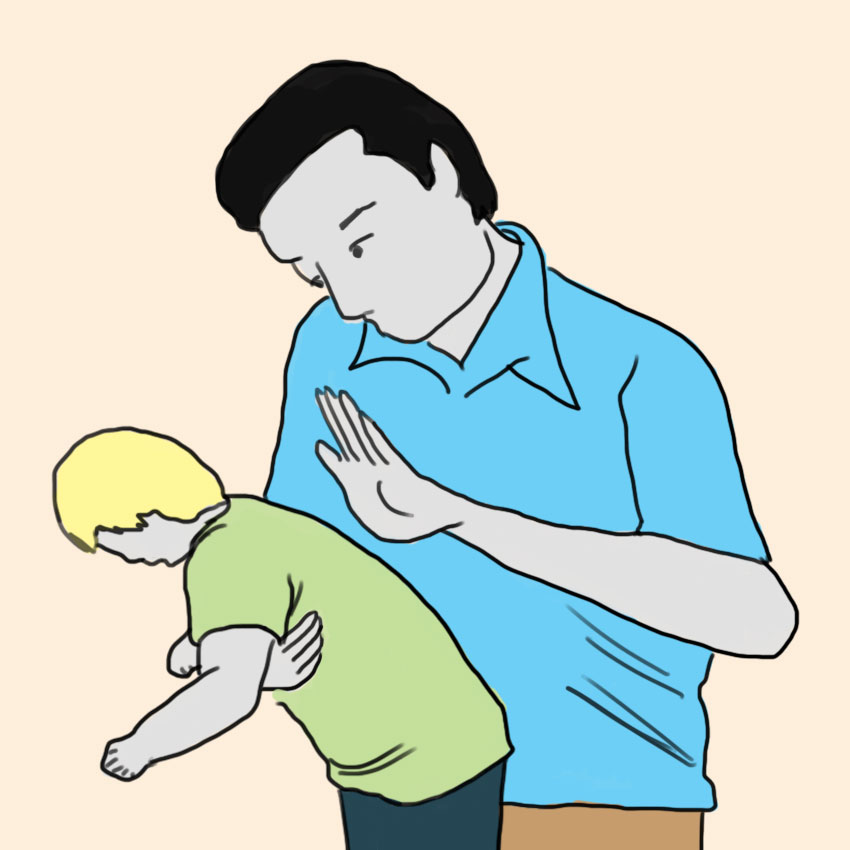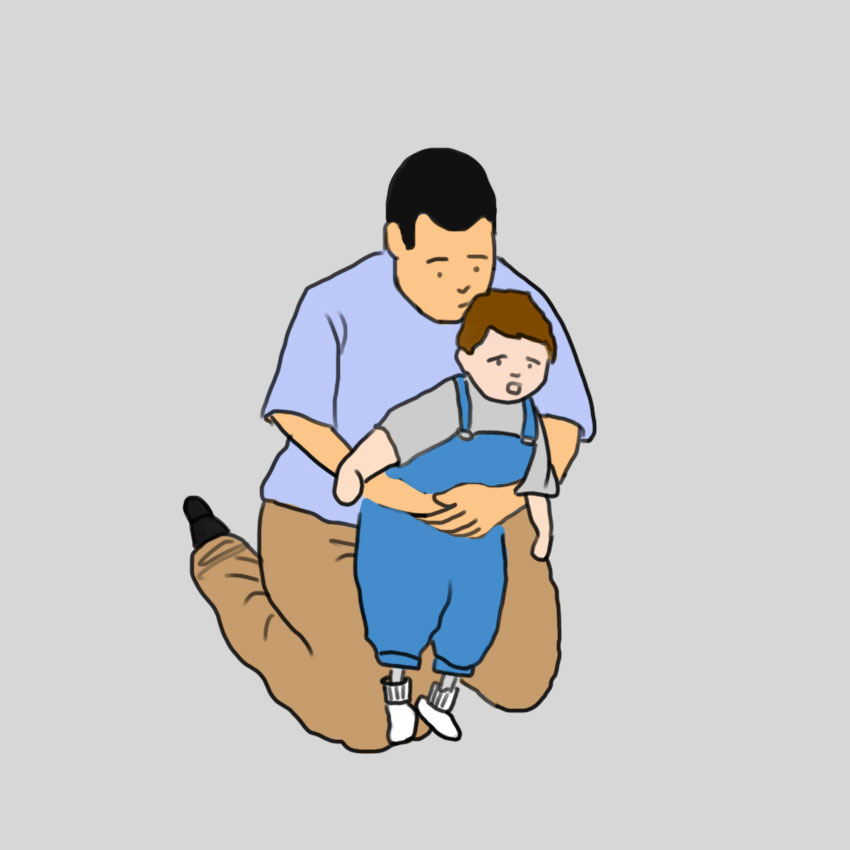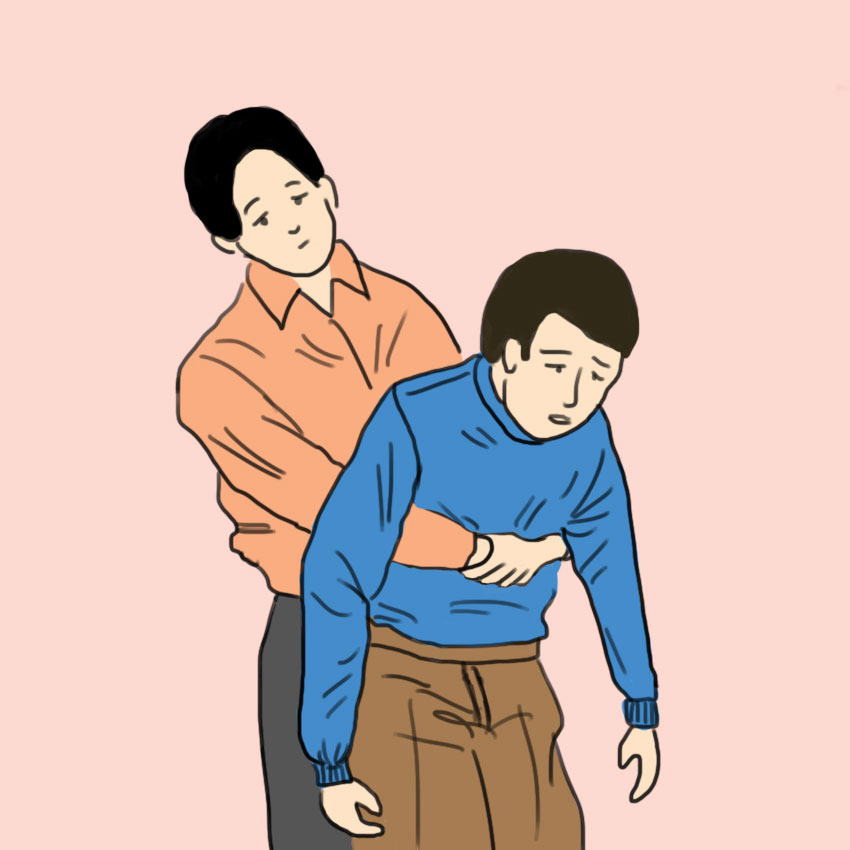While no one ever wants to think about an emergency situation, it is vitally important to be prepared just in case.
Whether knowing how to perform CPR on a pet or loved one, or possessing basic first aid skills, it is always better to find yourself ready to address any emergency right away.
And in the case of someone choking, it is crucial that the food or object be dislodged as quickly as possible.
According to the U.S. National Library of Medicine, "Without oxygen, brain damage can occur in as little as four to six minutes. Rapid first aid for choking can save a person's life."
Many people have seen the Heimlich maneuver performed on a choking adult, either on TV, in a movie, or in real life. But would you know how to save a choking baby? How about a choking toddler? And what would you do if you started to choke while you were alone?
Scroll through this exclusive information below to see how to perform the Heimlich on babies, kids, adults, and yourself.
We can all hope that we never have to use this information, but knowing what to do can mean the difference between life and death!
The Heimlich Maneuver For Babies

One of the most important things about basic first aid is to know when to perform the Heimlich maneuver.
According to WebMD, "If the baby can cough or make sounds, let him or her cough to try to get the object out."
The Heimlich is only for babies that are unable to make sounds, cough, or breathe.
Start by holding the baby facedown against your forearm. Lower the baby's head slightly below their chest, and rest your arm against your thigh.
Use the palm of your hand to support the head, but make sure the mouth isn't being covered at all.

Locate the point between the shoulder blades of the infant. Slap them in this location five times using the heel of your hand.

If back slaps do not do the trick, flip the baby over, supporting them with your forearm on your thigh.
Give five mini chest compressions to the infant's breastbone using two or three fingers.
Alternate between these compressions and back slaps until the baby can breathe again.
However, if the baby loses consciousness, you should quickly call 911 and start CPR.
The Heimlich Maneuver For Small Children

According to Parenting.com, the only time you should perform the Heimlich is if "your child is choking on an object and can't breathe (or can only make infrequent high-pitched gasps)."
For the Heimlich maneuver on a child over the age of 1, the U.S. National Library of Medicine describes the 5-and-5 method.
Hold the child facedown — parallel to the floor — and deliver five firm back blows to the area between their shoulder blades.

With the 5-and-5 method, if the object has not dislodged from the back blows, you should switch over to abdominal thrusts.
Start by kneeling behind the child and wrapping your arms around their waist.

Place a fist right above the belly button, thumb-side down, and grab that fist with your other hand.
Deliver five upward thrusts using your fist.
Alternate between five thrusts and five back slaps until the child can breathe again.
If the child loses consciousness at any point, you should quickly call 911 and start CPR.
The Heimlich Maneuver For Adults

In the case of adults, the U.S. National Library of Medicine recommends asking, "'Are you choking? Can you speak?' Do not perform first aid if the person is coughing forcefully and is able to speak."
Start by wrapping your arms around the person's waist. Place one fist just above the belly button, with the thumb side down. Grasp that fist using your other hand.

Deliver abdominal thrusts using a swift, upward motion.
You should continue these thrusts until the object becomes dislodged.
If the person loses consciousness or faints at any point, you should quickly call 911 and start CPR.
The Heimlich Maneuver If You Are Alone

Unfortunately, there is not always another person present when a choking emergency arises.
In this case, place your own fist between your rib cage and belly button, with your thumb side down. Hold your fist with your other hand.
Quickly thrust your fist upward into the upper abdominal area.
Repeat these thrusts until you the object becomes freed.

According to the U.S. National Library of Medicine, as an alternative, "you can also lean over a table edge, chair, or railing. Quickly thrust your upper belly area (upper abdomen) against the edge."
Keep repeating this thrust over and over again until the object becomes dislodged.
Knowing what to do in the unlikely event of a choking emergency can mean the difference between life and death. It is so important to be prepared just in case!
Always be sure to consult your doctor if you have any questions. And it is always a good idea to take a basic first aid class, if possible.
Please SHARE this vital and potentially lifesaving information with friends and family!




